Learn from these beginner gardening mistakes so that you don’t have to make them yourself!
You don’t know what you don’t know.
I’ll say up front that for beginner gardeners, trial and error is still going to be a part of the process.
You can know seemingly everything – and still make lots of mistakes.
However, this post might help you to make different mistakes, and fewer of them.
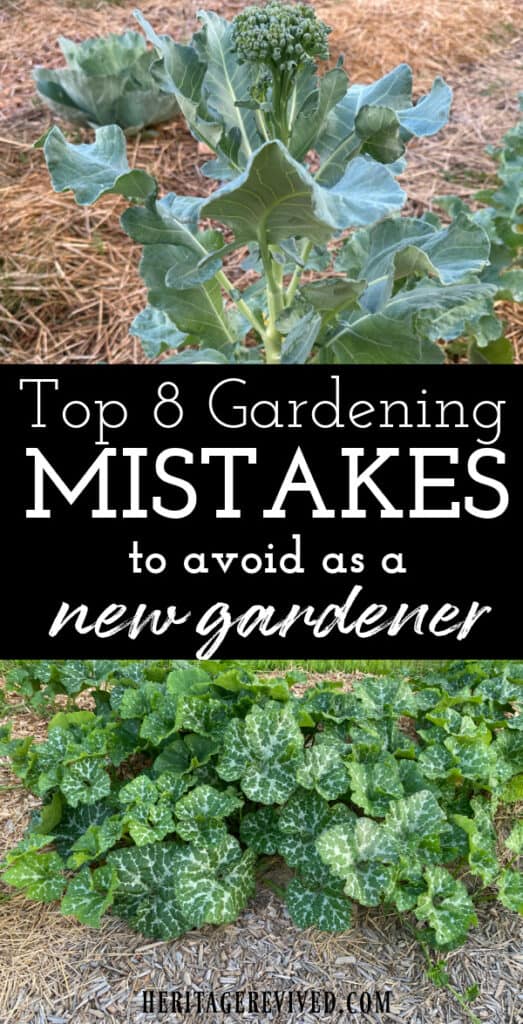
This site contains affiliate links to products. As an Amazon associate, I earn from qualifying purchases. Please read my disclosure for more info.
Beginner gardening mistakes will happen!
Even the best laid plans have to fight against a lot of variables.
If you’ve never had a garden before, you won’t even know what all those variables are yet- and that’s ok.
The last thing I want to do is discourage you from even starting your first vegetable garden.
But knowing some of the variables to watch out for, along with ways to avoid the biggest beginner gardening mistakes, can boost your confidence and increase your chances of a successful harvest.
Starting seeds at the wrong time
If you’re starting your own vegetable plants from seed, those little seed packet instructions can usually help you to know when to start seeds.
But they don’t necessarily take into account your soil medium or seed-starting method (natural light versus grow lights, etc.)
My advice is to start them a little earlier than you think you should.
While it’s a pain to have to find space for overgrown seedlings, it’s better than not having anything ready to plant in the ground and risk missing out completely.
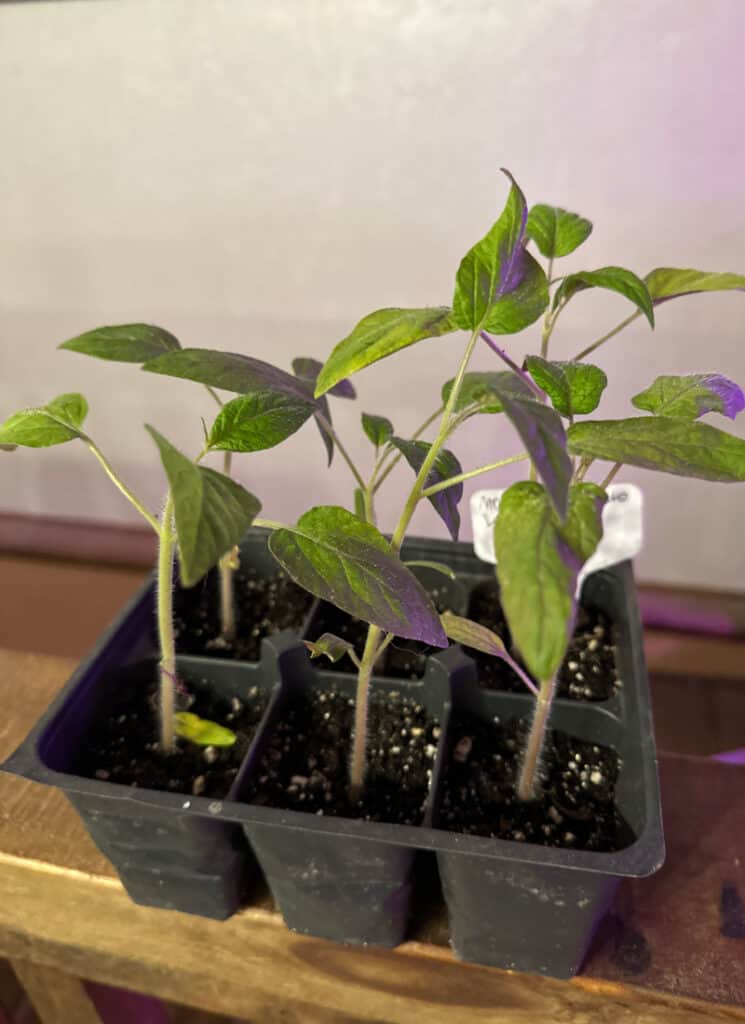
Not understanding your planting zone
Find your growing zone (or planting zone), and this will help you to determine when to plant both spring and fall crops outdoors.
Knowing your average last frost date and your first frost date can keep you from planting too soon or late for the particular plants you intend to grow.
There’s nothing worse than losing plants to a late frost; but it does happen.
Some of the cooler zones have such a short growing season that there are certain vegetables that don’t have time to produce before the first frost. You’ll want to know this ahead of time!
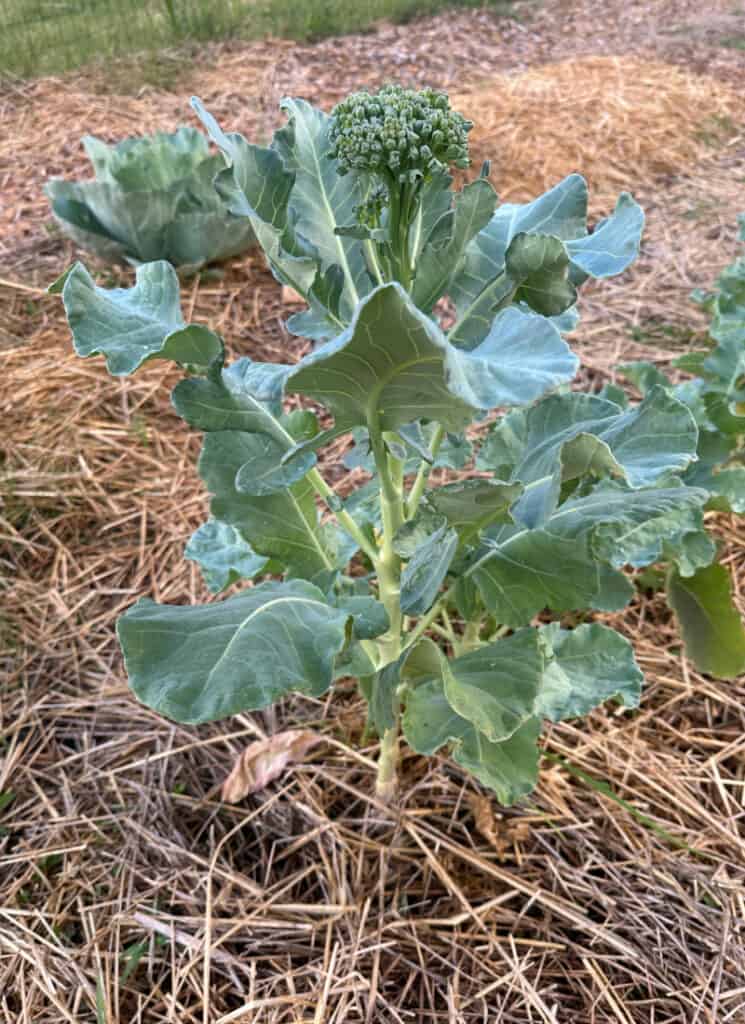
Note: *average is the key word to understanding your planting zone. In my area, for instance, I tend to plant my hot-weather tomatoes and peppers 2 weeks after my average “last frost date”- just to be on the safe side.
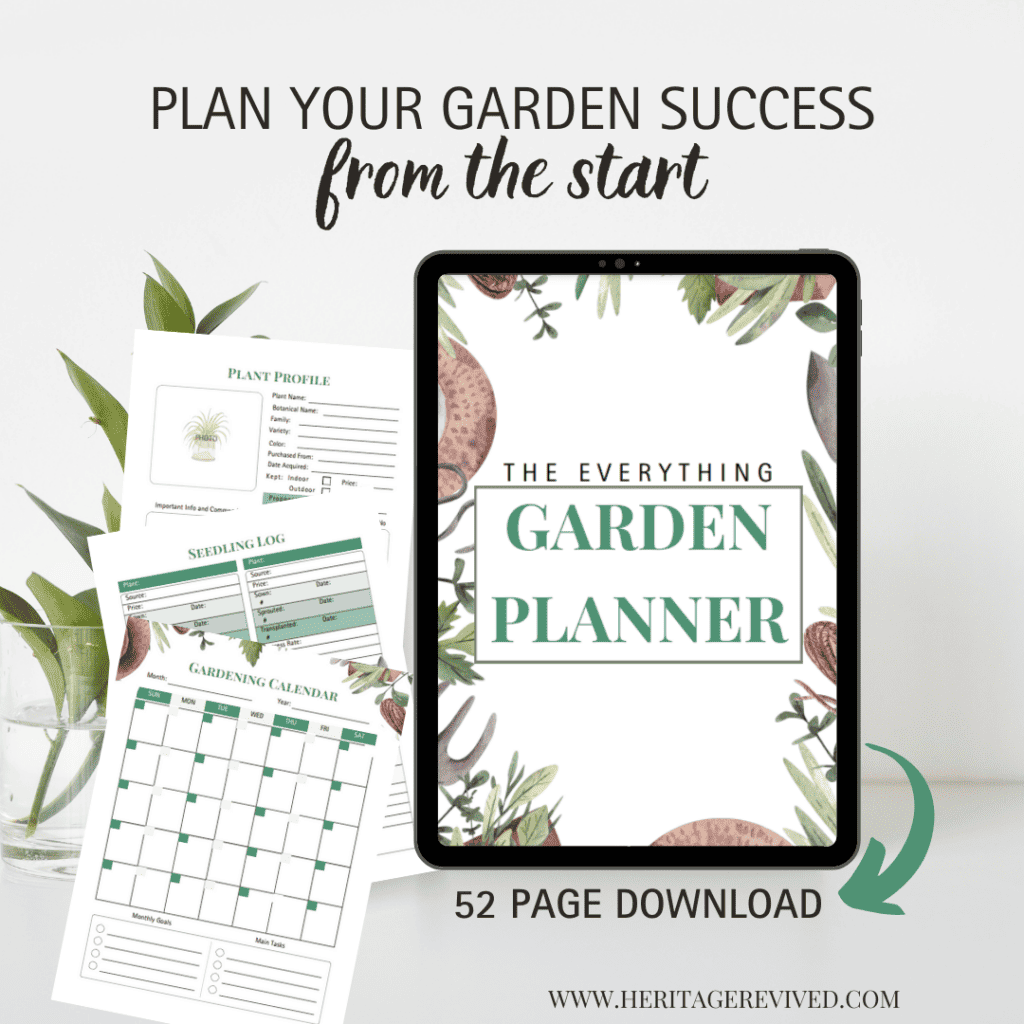
Poor garden placement
Most plants need a decent amount of sunlight each day, and well-draining soil.
Planting the entire garden in a shady, soggy spot can lead to major disappointment!
You also want to make sure you can easily reach your garden spot with a hose – without connecting 10 together, ideally.
And it also helps to have your garden spot close enough to the house that you don’t forget to check on it frequently.
Investing too much into one method or idea
I LOVE reading about new gardening methods and implementing things I’ve learned.
However, I’ve also learned that not everything I read in a book will work in my garden. So I’m better off trying a few new ideas but not committing 100% to any one method.
Sometimes this has to do with my climate, the particular types of weeds that I battle where I live, or even the materials available in my area.
You can spend a lot of time and money on equipment and garden amendments which you may or may not actually need, or can find cheap or free substitutes for.
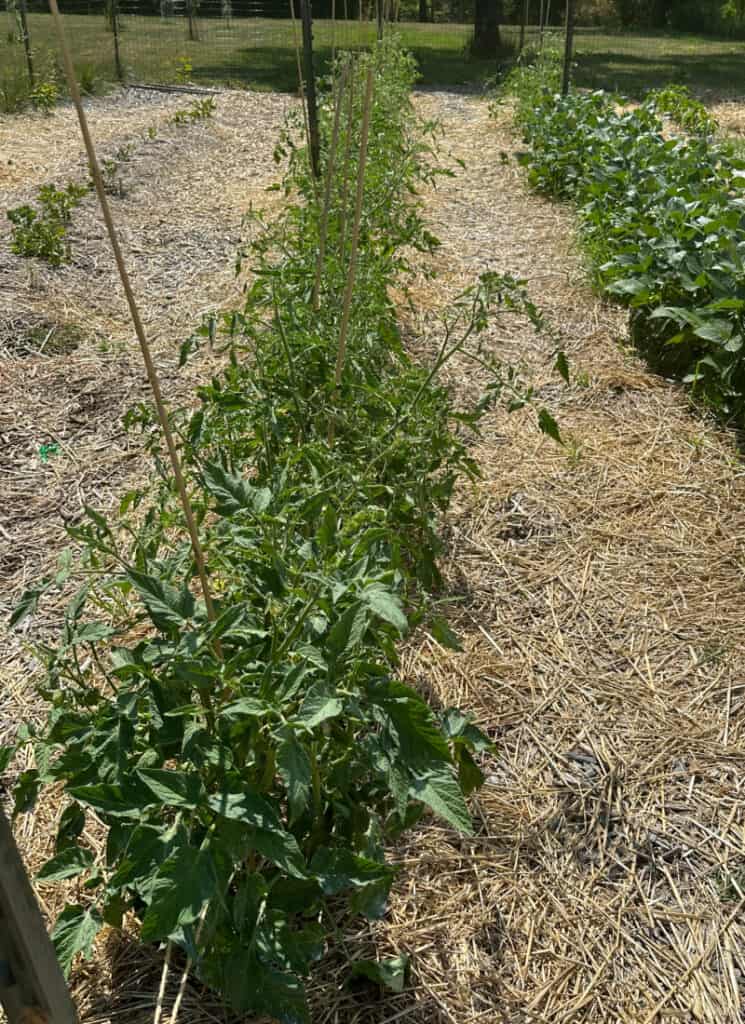
Not listening to local gardeners
As new gardeners, we can get a little excited about our own gardening plans and ideas.
But just like ignoring your planting zones or being married to a “method” — you can also miss out on valuable advice from the locals.
Talk to farmers at the farmer’s market, and gardeners who have been at it for a while. They can tell you what has worked for garden pests, fertilizer, and more.
University extension offices often have Master Gardening classes available.
In general, listening to a variety of sources who have had successful gardens in your local area can take a lot of the guesswork out of your new garden venture.
Planting too close together
The first few years I was doing container gardening, I couldn’t withstand the temptation to plant two or three tomatoes in one big container.
I finally learned that tomatoes suck up a ton of nutrients and needed plenty of space to thrive (one per container was plenty).
It can be hard to visualize how big tomato, cabbage, and squash plants can really get – but following the spacing recommendations can help plants to thrive and produce to their potential.
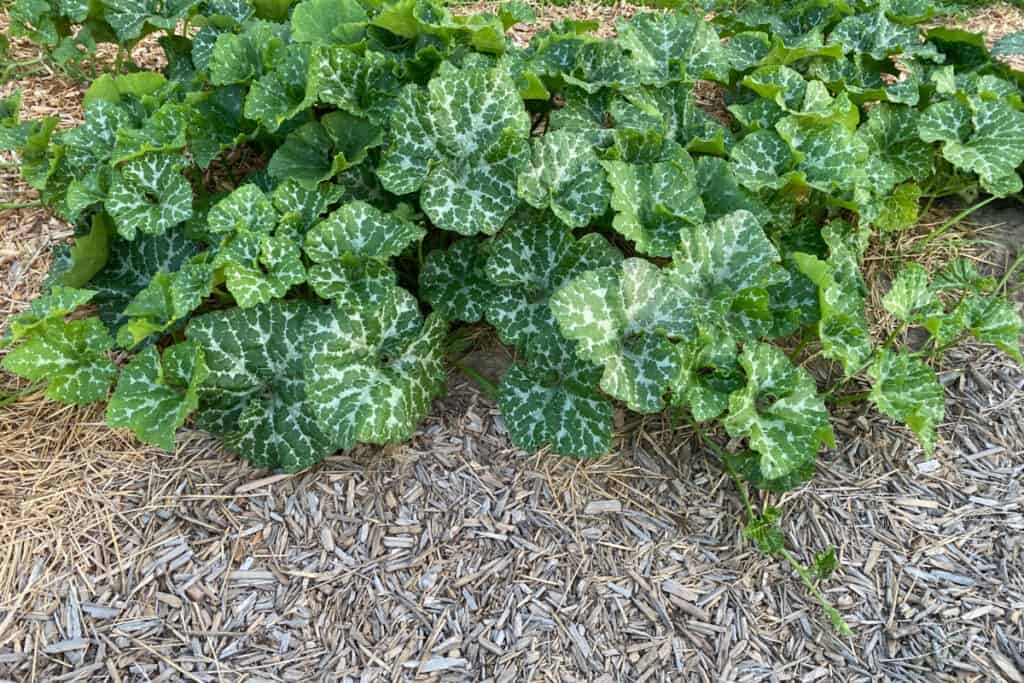
Overwatering
As a first year gardener, I was Guilty on All Counts. Unless it was raining, I was in the garden watering nearly every night.
I learned that especially for my Raised Row garden, this was unnecessary.
Most hot weather veggies do better with mulch and deep watering once or twice a week, than with a quick nightly watering routine.
Deep, less frequent watering also helps to develop deeper roots.
Not being proactive
It’s easier to pick a few weeds a day than dig up a weed patch; and it’s easier to deter pests than it is to eliminate an army of them.
Of course, there are many methods for both weeds and pests, and this will largely depend on the type of garden you have and your personal goals (organic versus conventional, etc).
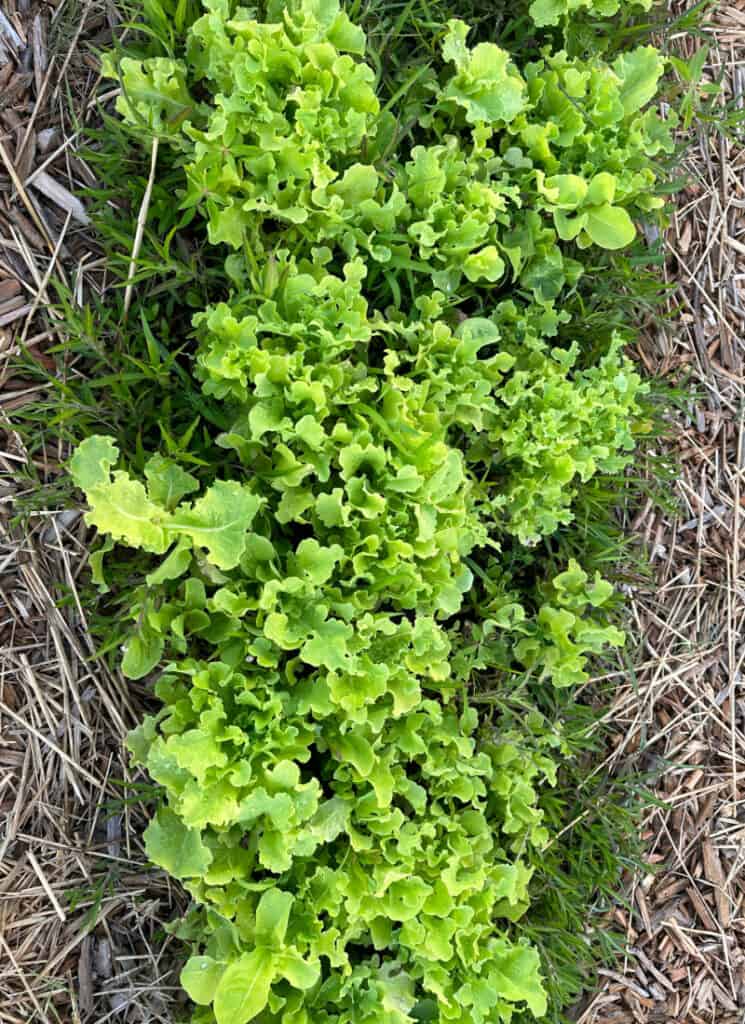
However, just a few minutes in the garden each evening, inspecting plants for insect damage and disease, and pulling errant weeds can help you stay on top of major problems before they start.
Not knowing your plant’s needs
Differing plants can have differing needs in the same garden.
I discovered this when planting blueberry bushes a few years ago, which seemed to start dying right away.
It turns out they were lacking in iron, and I was giving them the wrong nutrients.
(A soil test to determine the pH they required would have been helpful, too).
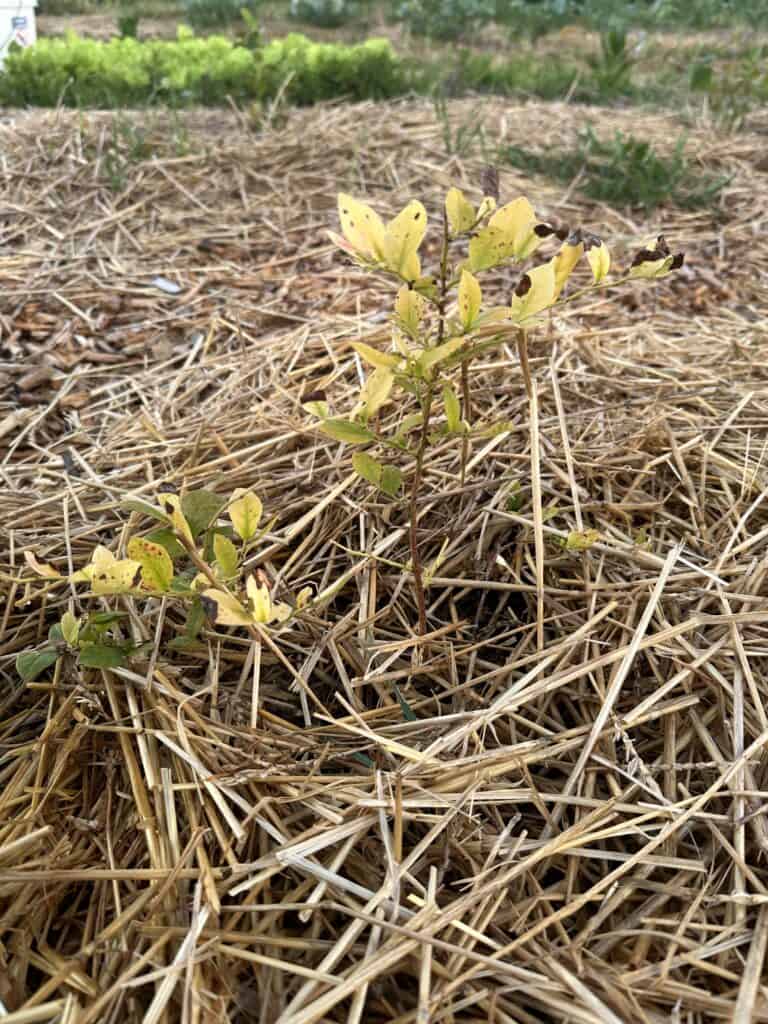
The same goes with fruit trees and other sensitive plants: it’s good to know the type of soil they thrive in, when to prune, and how to prevent pests even before you plant them.
Beginner gardening mistakes -or opportunities?
My grandma who grew up just after the Great Depression, recalls how her family of 8 only “ate what they grew”, for the most part.
That meant:
- Foraging for berries
- Planting whatever hearty veggies they could with unpredictable rainfall (hello, turnips) and lots of hoeing
- Raising chickens for eggs and meat (usually processed and eaten the same day)
- Raising pigs for pork (to cure and store for winter).
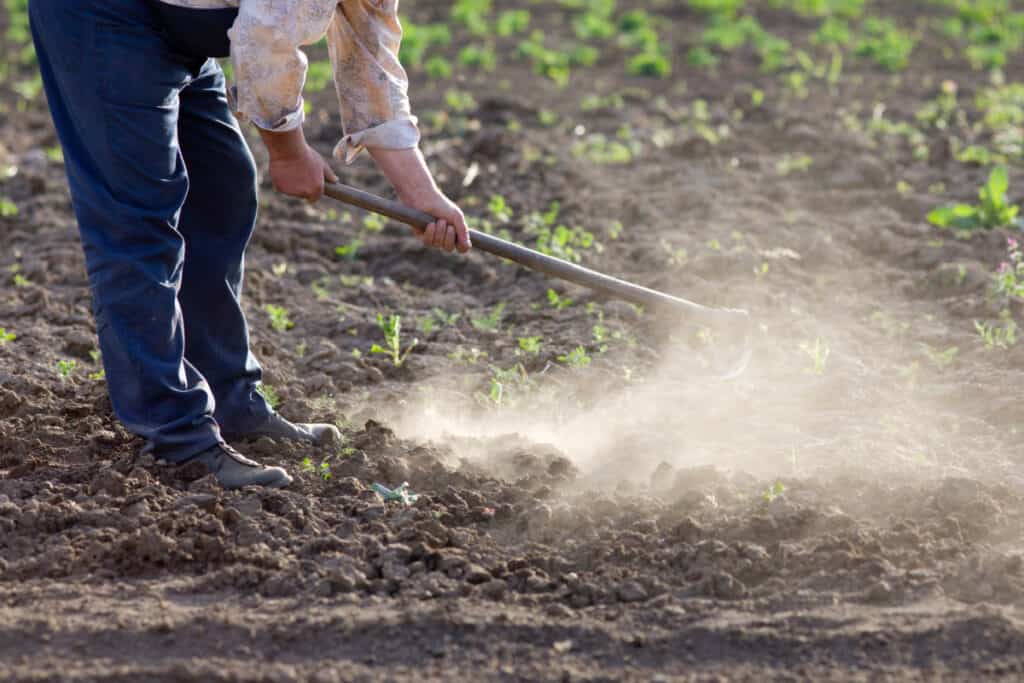
She remembers her first hamburger as a teenager, and it was quite the experience.
Before then, beef was not commonly preserved and they did not raise cows until Grade A dairy barns came along with electricity (in the barn first, and then the house was next).
Fortunately for most of us today, we can afford at least a slight learning curve in the garden.
And — it’s not all we have to eat for the entire year.
We learn and grow along with our vegetables. We use mistakes as opportunities to tweak our technique and try again, and again.
If you’ve made some of these beginner gardening mistakes or are worried you will- don’t fret!
And definitely don’t let the fear of failure prevent you from moving forward.
There are rewards to be had from the process of gardening, even in the beginner years and in the frustrating seasons that don’t go the way we plan.
(Namely, the reward of home-canned tomato sauce waiting in the pantry.)
Winter time is a great time to keep reading, making notes, and planning for new successes to come.
So learn from your “mistakes”, document what you’ve learned, and be proud of the fruits of your labors, and the skills you’re learning along the way.
And check out our printable Everything Garden Planner, for getting your garden off on the right foot, right from the start.
Read next:
Free and Cheap Materials to Fill Raised Beds
Preserving vegetables without the freezer or fridge
How we grew potatoes from seed (True Potato Seeds)
Natural Weeding Methods in the Vegetable Garden
